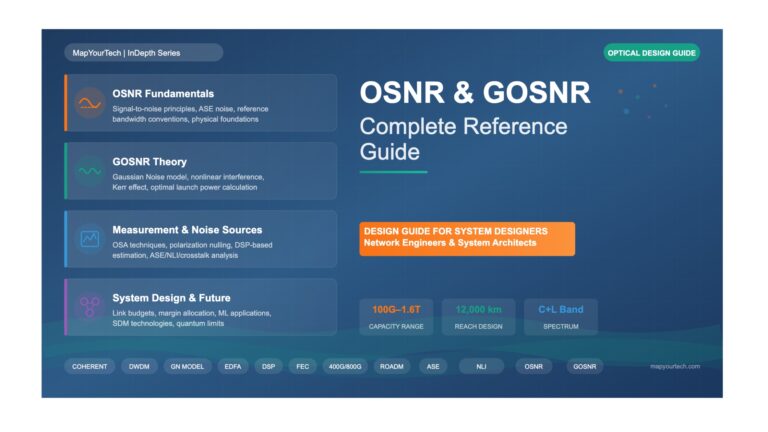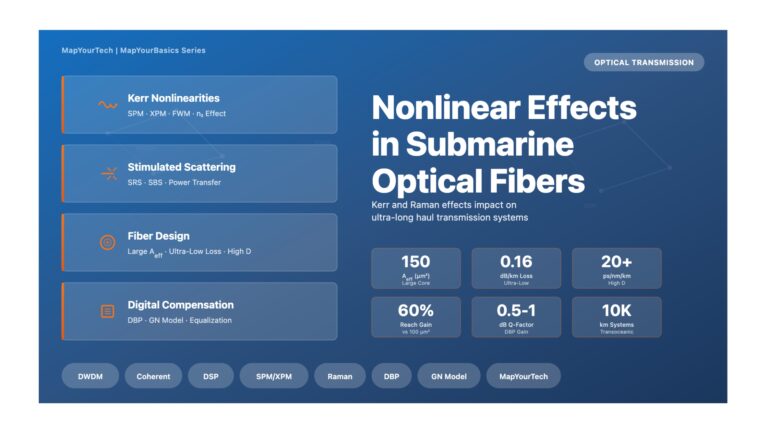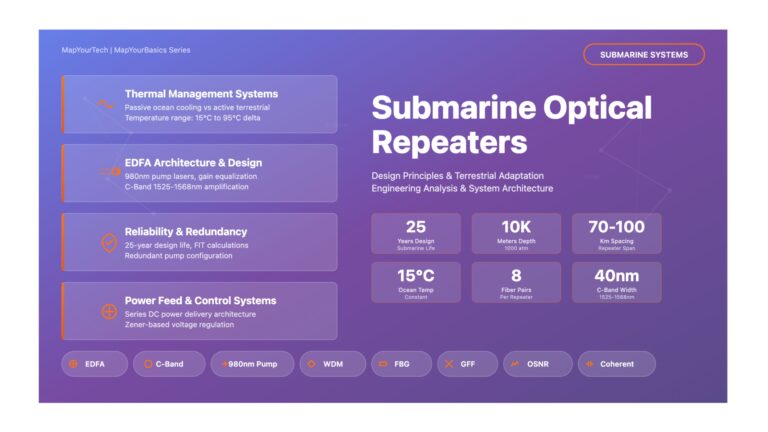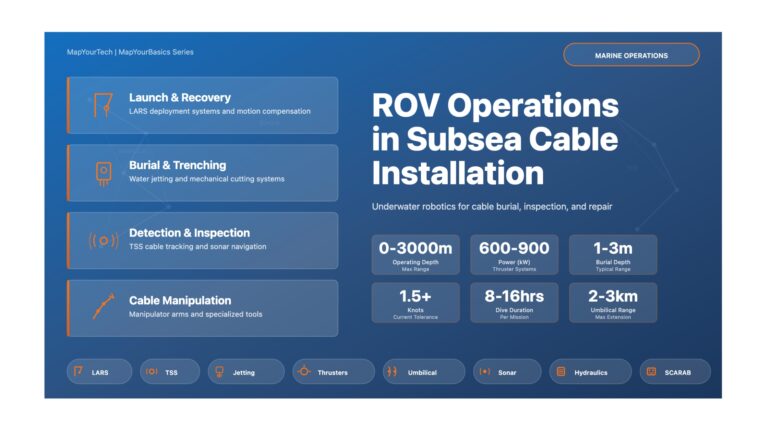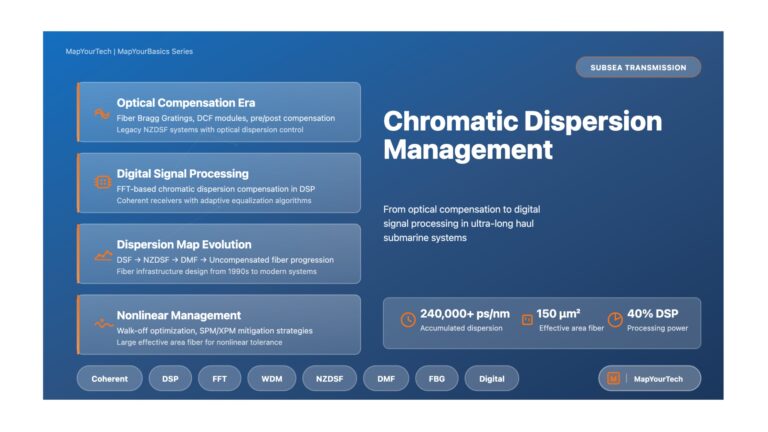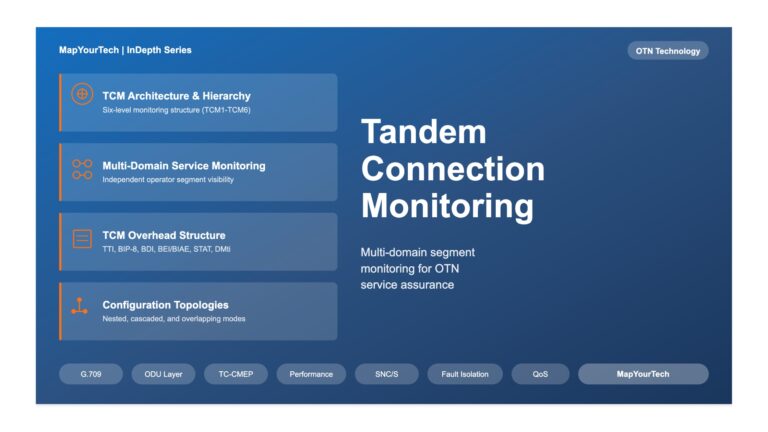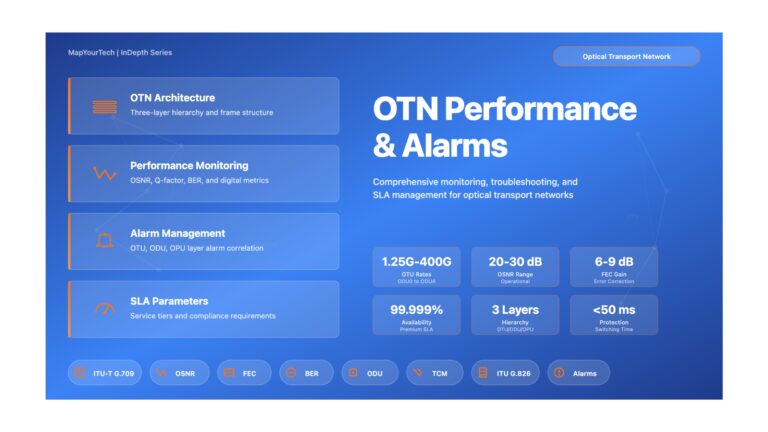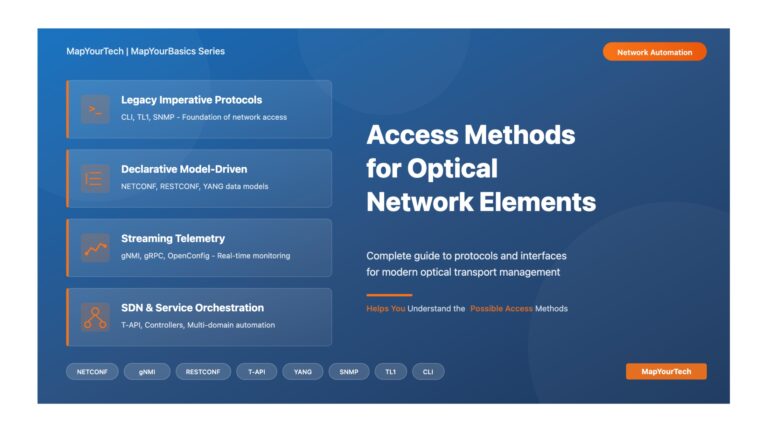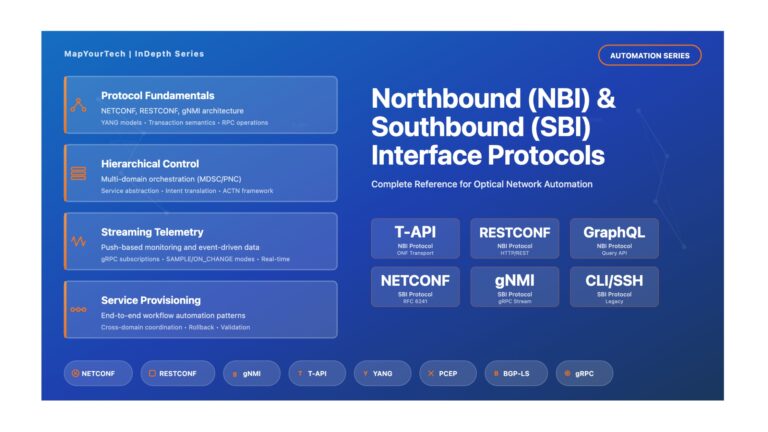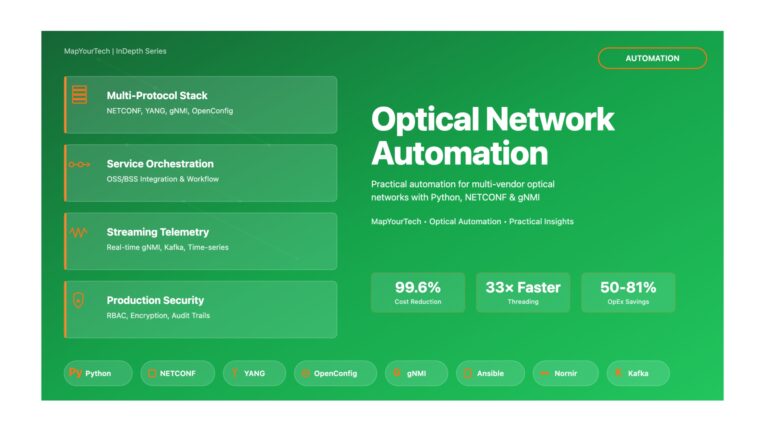Standards
Showing 11 - 20 of 271 results
OSNR and GOSNR Complete Reference Guide – Fundamentals OSNR and GOSNR Fundamentals of Optical Signal-to-Noise Ratio 1.1 Introduction to OSNR...
-
Free
-
December 12, 2025
Nonlinear Effects in Submarine Optical Fibers Optical Transmission Nonlinear Effects in Submarine Optical Fibers Understanding Kerr and Raman nonlinearities and...
-
Free
-
December 7, 2025
Submarine Optical Repeaters: Design Principles and Terrestrial Adaptation Challenges Submarine Optical Repeaters: Design Principles and Terrestrial Adaptation Challenges Challenges and...
-
Free
-
December 7, 2025
ROV Operations in Subsea Cable Installation MARINE OPERATIONS ROV Operations in Subsea Cable Installation Underwater Robotics for Cable Burial, Inspection,...
-
Free
-
December 7, 2025
Chromatic Dispersion Management in Subsea Systems Subsea Transmission Technology Chromatic Dispersion Management in Subsea Systems From Optical Compensation to Digital...
-
Free
-
December 7, 2025
Tandem Connection Monitoring in OTN Networks | MapYourTech Tandem Connection Monitoring in Optical Transport Networks Comprehensive guide to multi-domain service...
-
Free
-
December 3, 2025
OTN Performance and Alarms – Foundations & Architecture (Enhanced) OTN Performance and Alarms A comprehensive technical guide for optical network...
-
Free
-
December 2, 2025
Access Methods for Optical Network Elements | MapYourTech Optical Network Automation Access Methods for Optical Network Elements A Comprehensive Guide...
-
Free
-
December 1, 2025
NBI and SBI Protocols at Different Layers – Part 1: Foundation & Core Concepts | MapYourTech NBI and SBI Protocols...
-
Free
-
December 1, 2025
Explore Articles
Filter Articles
ResetExplore Courses
Tags
automation
ber
Chromatic Dispersion
coherent optical transmission
Data transmission
DWDM
edfa
EDFAs
Erbium-Doped Fiber Amplifiers
fec
Fiber optics
Fiber optic technology
Forward Error Correction
Latency
modulation
network automation
network management
Network performance
noise figure
optical
optical amplifiers
optical automation
Optical communication
Optical fiber
Optical network
optical network automation
optical networking
Optical networks
Optical performance
Optical signal-to-noise ratio
Optical transport network
OSNR
OTN
Q-factor
Raman Amplifier
SDH
Signal amplification
Signal integrity
Signal quality
Slider
submarine
submarine communication
submarine optical networking
Telecommunications
Ticker

